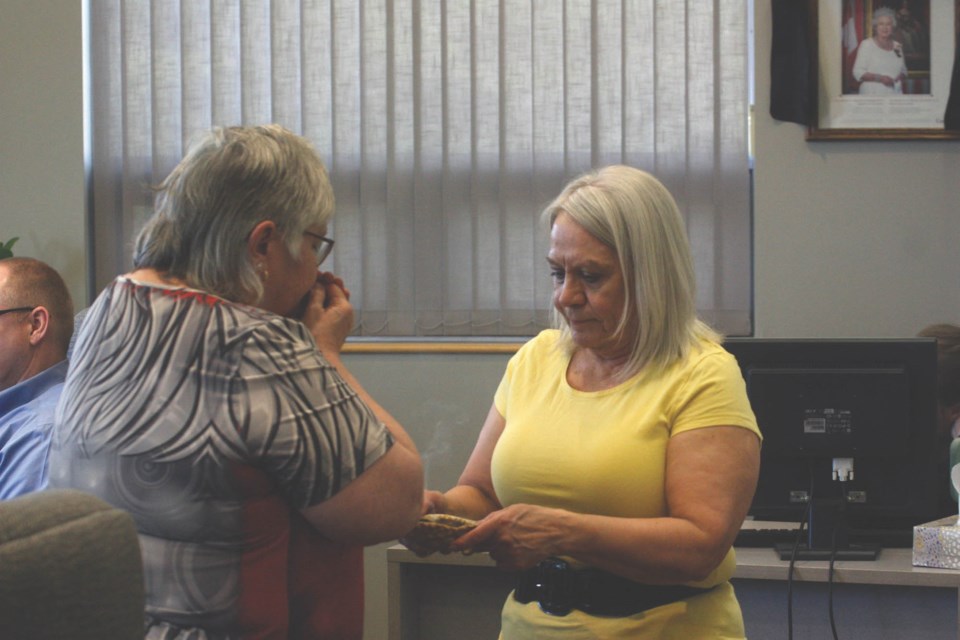ATHABASCA – If you’ve attended a public meeting, or an opening ceremony for a hockey tournament over the last few years, there’s a good chance that you’ve heard something along the lines of “I would like to begin by acknowledging that this meeting is taking place on the traditional territory of…” or something similar.
These statements are called land acknowledgements, and they’ve become increasingly common in Canada, as groups try and figure out their own way recognize the Indigenous history of the land they occupy. For the Town of Athabasca’s council, the process started with Coun. Edie Yuill, soon after her term started. “I was quite stunned that Athabasca hadn’t gone ahead and done it,” she said in a follow-up interview April 19. “This was one of the things I decided was important to me, and to the community at large.”
The council has been using the acknowledgement since August 2022, but the April 18 meeting was a conclusion to the process, and the start of something new. Alma Swan, a member of the Bigstone Cree Nation, led councillors through a smudging ceremony, after she gave them an in-depth rundown on what the ceremony represented.
“We’re all in this for the reconciliation part. In my opinion, we did the smudging as a ‘let’s start fresh, and let’s move forward, it’s about moving forward in a respectful manner,” said Swan. “I’ve been in different settings where people chose not to do the smudge for a variety of reasons, and I was very humbled when all the councillors chose to do the smudge.”
The ceremony started with mayor Rob Balay presenting Swan with a traditional gift of tobacco, which is part of what Swan refers to as the “tobacco protocol.”
“The reason we use tobacco, is that many years ago, back on Turtle Island (the name some Indigenous groups use to refer to North America) that was one of the first things to grow,” said Swan. “So, we use it for ceremonies, and that’s one of the reasons that the tobacco protocol exists.”
Before councillors were given the option to partake in the smudging ceremony (which they all did), Swan explained the significance behind the ceremony. “We don’t consider smudging praying; we consider it cleansing. We smudge to clean the air around us. We smudge to clean our minds so that we will have good thoughts of others. We smudge our eyes so we will only see good things in others. we smudge our ears so we only listen to good things of others. We smudge our mouths so that we only speak well of others. We smudge our whole being so we will portray only the good part of ourselves in our actions,”
Swan, who works as the Education for Reconciliation Lead at Aspen View Primary Schools, was asked to assist with the creation of the land acknowledgement process, after it had undergone a bit of a slow start.
“Part of my role is educating about the history, about residential schools, and the impacts of residential schools, and why we do land acknowledgements. A land acknowledgement is a living document, and as you learn more you change it. If you’re just going to do it for the sake of reading it, then it serves no purpose. It’s about changing it up as the needs be.”



